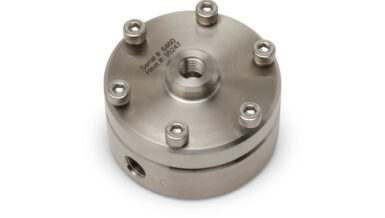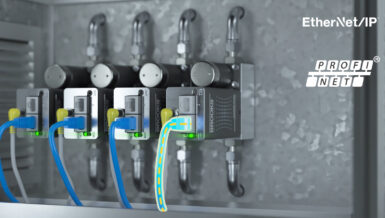The challenge is how to take advantage of the information offered by instrumentation and get it to the people who want to see it regardless of the instrument’s location. The solution is digitalization.
Digitalization allows information to be transmitted safely and securely via either IP protocols or cloud-based platforms to the PCs, tablets, or phones of those who need it, so that they can respond appropriately to the data that’s being gathered. There are a few steps to making this happen and, in turn, taking maximum advantage of the field instrumentation. The first of these steps is getting the information out of the instrumentation itself.
Today’s instrumentation offers many ways of transmitting data. The traditional methodology is via an analog output signal, which provides one piece of information as determined by the configuration of the instrument itself. While this information is usually the most important data, it doesn’t necessarily include all the data available to communicate the health and status of the instruments involved. That’s why more and more instruments today are taking advantage of digital communication protocols such as Modbus to not only provide process measurement data, but also to look at the instrument’s internal diagnostics and communicate its health status.
With all the measurement and diagnostic information coming out of process instrumentation, the challenge becomes getting that information safely and securely to those people within the operation that need to see and respond to it. In the case of upstream oil and gas as well as oil and gas pipelines, there is a high likelihood that the instruments are going to be sitting in a very remote location, so you must determine how best to get that information from the remote location to its desired recipient. Today this can be done through either IP-based or cloud-based platforms using smart monitoring applications. At Siemens your choices include the SITRANS store IQ, serve IQ, or SCM IQ application platforms. There are similarities and differences among these three apps that we will now briefly review.
The SITRANS store IQ digital monitoring app works in conjunction with the Siemens Mindsphere cloud platform to transfer information from process measurement instrumentation to the individuals who need to see that data. This is carried out through a one-way communication design to ensure the highest levels of security. The store IQ app transfers the designated information into a web-based platform that allows for visualization, trending, notifications, etc., providing the user with the data they want to see in the format they want to see it. Notifications can be structured to go to specific personnel via text messaging, email, or voicemail. This means that the users of the application never have to worry whether their instrumentation is providing what they need, because they can take a look at it at anytime from anywhere. In addition, they can be assured that if something happens within the process or to the instrument itself, they will be kept up-to-date in real time.
The SITRANS serve IQ app works very similarly to store IQ, but it does not utilize the communication protocol in a streaming manner. Instead, it uses information gathered over fixed periods of time as designated by the user, then transmits it via an email file that can be used in conjunction with the serve IQ app to monitor processes that need to be measured. This can be a very useful platform for applications like upstream oil and gas drilling sites where, for example, flow meters might be operating off a power grid using batteries. In order to preserve maximum battery life, the information can be gathered and transmitted at a fixed interval (such as once an hour, day, or week) instead of requiring the meter to run constantly and draining the battery more quickly than desired. What serve IQ provides is similar formatting to store IQ, so that the information sent is user-friendly and easily understandable. The app also offers notifications to the user if specific alerts are desired.
SITRANS SCM IQ is a little more specific in its application, as it is designed to monitor and report on vibration anomalies such as those found on pumps, motors, and both gas- and electric-powered compressor station turbines. When properly configured, the app will monitor the health and well-being of this type of equipment and proactively alert the user of the need for preemptive maintenance instead of waiting for a pump or motor to fail. As a result, processes can be kept operational with the highest levels of effectiveness and efficiency.
In conclusion, what all of these smart monitoring applications provide is the ability to take data that already exists within field instrumentation, regardless of where it may be located, and provide it to users anywhere and at any time. In addition to the traditional process measurement information, these apps can take advantage of the diagnostics present in the equipment and trend the results that they are seeing. The provided information can be used for preventative maintenance instead of having to wait for instrumentation to fail. This improves productivity and maximizes the efficiency of maintenance efforts by dealing with potential situations before they can lead to critical downtime of the process measurements.
Siemens offers our customers a wide range of process measurement technologies as well as control room products and digital applications that can be bundled together to create solutions for specific industry needs. Please feel free to contact us if you would like any additional information on the apps referenced in this white paper or to discuss other solutions for your process and control challenges.































